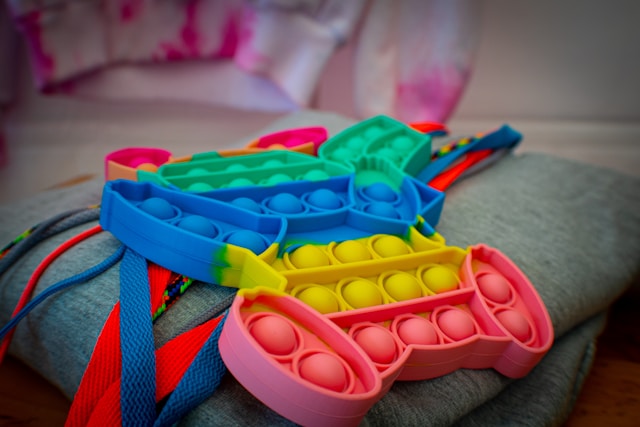While traditional stress-relief methods like exercise, meditation, or therapy are widely recommended, sensory tools are gaining popularity as simple, effective, and accessible ways to calm the mind and body. These tools, originally developed for children with sensory processing challenges, are now being embraced by adults to improve focus, reduce anxiety, and enhance overall well-being.
As the conversation around mental health and well-being continues to grow, sensory tools stand out as accessible, effective, and versatile options for adults navigating the challenges of daily life.
Why Sensory Tools Work
Sensory tools engage the senses—touch, sight, sound, and sometimes even smell—to provide grounding and calming effects. They help redirect nervous energy and stimulate the nervous system in a way that promotes relaxation. For adults, this is particularly beneficial during stressful workdays, overwhelming situations, or moments of mental fatigue.
Key benefits of sensory tools include:
- Regulating Emotional Responses: They help soothe feelings of anxiety or frustration by providing a sensory “anchor” on which to focus.
- Improving Concentration: Sensory engagement can reduce distractions and aid in maintaining focus, especially during tasks requiring prolonged attention.
- Promoting Mindfulness: The repetitive and tactile nature of many sensory tools encourages users to stay present in the moment, fostering mindfulness.
Popular Sensory Tools for Adults
Fidget Toys and Cubes: Small, discreet, and versatile, fidget toys like spinners, cubes, or stress balls offer tactile stimulation that helps redirect fidgeting energy into something productive. They are particularly useful during meetings, long commutes, or while working at a desk.
Weighted Products: Weighted blankets, lap pads, and compression vests provide deep pressure stimulation, which is known to have a calming effect on the nervous system. These products are ideal for unwinding after a long day or during moments of heightened stress.
Liquid Motion Bubblers: These visual tools feature colorful liquids that flow and swirl, creating a mesmerizing and soothing effect. They are perfect for reducing screen fatigue or taking a mental break during a busy day.
Sensory Stress Balls: Stress balls with varied textures, squishiness, or fillings (such as gel or sand) provide both tactile and proprioceptive input, relieving stress and improving focus.
Noise-Canceling Headphones: Blocking out overwhelming background noise can significantly reduce stress, especially in noisy work environments or crowded public spaces. Some headphones also play calming nature sounds or white noise for added relaxation.
How Sensory Tools Fit into Daily Life
One of the greatest advantages of sensory tools is their portability and ease of use. Here’s how they can be incorporated into an adult’s daily routine:
At Work: Keep a small fidget toy or stress ball at your desk to help maintain focus during long tasks or meetings. Liquid motion bubblers can act as a calming visual break during busy work hours.
During Commutes: Noise-canceling headphones or portable sensory tools like fidget cubes can make crowded trains or long drives more bearable.
At Home: Weighted blankets or sensory lights can create a calming environment for relaxation or sleep, helping to transition from a busy day to a restful night.
In Social Settings: Small, discreet tools like pocket-sized stress balls or silicone sensory rings can help manage social anxiety or nervous energy in public.
For Relaxation: Incorporate sensory tools into mindfulness or meditation practices to enhance the calming experience.
